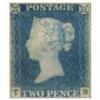Setting lever spring
-
Recently Browsing
- No registered users viewing this page.
-
Topics
-
Posts
-
…only because I miss the flow of watch pics here’s one from my bin I buttoned up today…Rollie only in name- one of those fhf 30 deals. The movement cleaned up nice and shiny. About as simple as they come…
-
Oh man that Chung lathe is amazing. Unrelated: if anyone needs a kidney I know where one can be had….
-
Very nice set. I agree: adjustable tool.
-
By Neverenoughwatches · Posted
Thanks Andy. Similar principle to the taper and plug taps.








Recommended Posts
Join the conversation
You can post now and register later. If you have an account, sign in now to post with your account.
Note: Your post will require moderator approval before it will be visible.